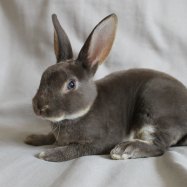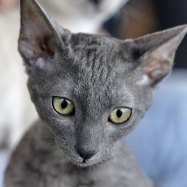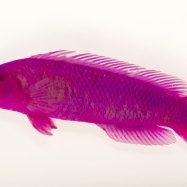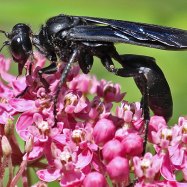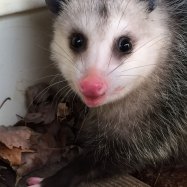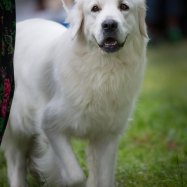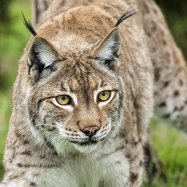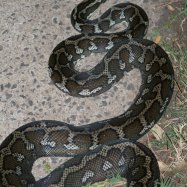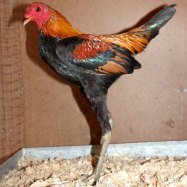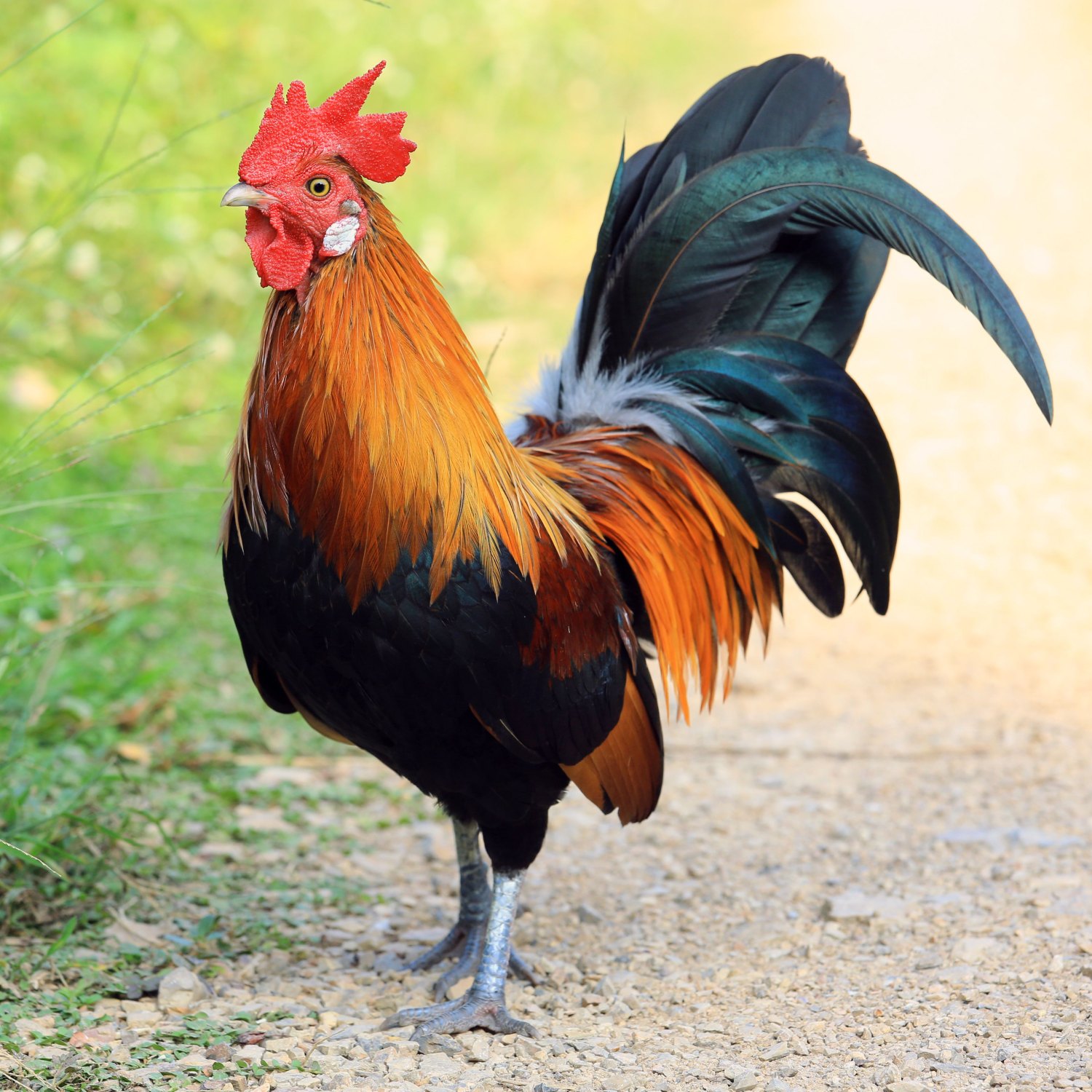
Rooster
Approximately 18-20 inches
Roosters are familiar farm animals, with a stocky body shape and measuring around 18-20 inches in length. They belong to the Phasianidae family and can be found in farmyards, poultry farms, and backyards. The rooster's signature crow and vibrant feathers make them a popular addition to many households. Consider adding a rooster to your flock for their beauty and charm.
Animal Details Summary:
Common Name: Rooster
Kingdom: Animalia
Habitat: Farmyards, rural, and suburban areas
Introducing the Rooster: A Prized Farmyard Resident
Roosters, with their majestic feathers and powerful crows, are a common sight in farmyards, rural areas, and even suburban neighborhoods. These avian creatures, known scientifically as Gallus gallus domesticus, are a domesticated species of chicken that hold a special place in many people's hearts. Despite their adoration, roosters are often misunderstood and underappreciated. In this article, we will delve into the fascinating world of the rooster, exploring their biology, behavior, and the roles they play in our lives Rooster.A Classification Overview of the Rooster
As a member of the Kingdom Animalia, Phylum Chordata, Class Aves, and Order Galliformes, the rooster belongs to the family Phasianidae. This family also includes pheasants, quails, and turkeys. What sets roosters apart from other birds in their family is their ability to form complex social hierarchies and their distinctive crowing calls.Habitat and Distribution
Roosters can be found all over the world, with the exact country of origin being unknown due to their domesticated nature. However, these birds are believed to have originated from Southeast Asia. Today, roosters can be found in farmyards, poultry farms, and backyard settings globally. They are well-adapted to survive in diverse environments, from tropical regions to colder climates.The Life of a Rooster
Roosters have a relatively short lifespan of 3-5 years. In their first months of life, roosters are known as cockerels and are typically raised with hens in the same flock Royal Penguin. As they reach maturity, roosters start displaying their distinctive traits, including their colorful plumage and crowing skills. Roosters are monogamous, meaning they mate with only one hen for their entire life. They are highly protective of their hens and will fiercely defend their territory against any perceived threats.Body Shape and Coloration
A typical rooster stands at about 18-20 inches tall, making them a medium-sized bird. They have a stocky body shape with a plump chest and strong legs designed for scratching and foraging. Unlike hens, roosters have a more prominent comb and wattles on their head. These serve as a sign of health and physical fitness, making them more attractive to potential mates. Roosters come in a variety of colors, including red, green, brown, black, and white. Their coloration is determined by their genetic make-up, with some breeds having more vibrant feathers than others.Feeding Habits: Omnivorous Eaters
Roosters are omnivorous, meaning they consume a diet that includes both plant and animal matter. In a farmyard setting, roosters primarily feed on grains, seeds, and insects. They scratch the ground with their sharp claws to uncover food and can often be seen pecking at the ground in search of worms and other small creatures. Roosters also have a unique way of calling their hens to a tasty treat they have discovered, a behavior known as tidbitting.The Role of Roosters in Farmyards
Roosters play a vital role in farmyards, serving as protectors and leaders of the flock. Their loud crowing serves as a warning to other animals of potential threats or disturbances. They also defend their territory from predators such as foxes and coyotes. Roosters have a natural instinct to care for their hens, ensuring they have a safe place to lay eggs and protecting them from harm.The Rooster's Distinctive Call
One of the most well-known characteristics of roosters is their crowing call. Typically, roosters will crow just before sunrise to signal the start of a new day. However, they may also crow at other times during the day, especially when disturbed or wanting to communicate with their hens. Each rooster has a unique crow, and this call can even be used to identify an individual rooster within a flock.The Misconceptions Surrounding Roosters
Despite their important roles on the farm, roosters have long been misunderstood and even vilified in popular culture. They are often portrayed as mean, aggressive animals, constantly attacking everything in their path. The truth is, roosters are protective animals and only display aggression when necessary, such as defending their hens or territory. With proper care and handling, roosters can be gentle and even friendly creatures.The Rooster's Contribution to Sustainability
In recent years, there has been a growing trend towards sustainable living and self-sufficiency. Raising backyard chickens, including roosters, has become popular among urban and suburban residents. These birds provide a source of fresh eggs and can be fed kitchen scraps, reducing food waste. They also play a crucial role in fertilizing the soil, helping to grow gardens and increase plant yields.The Future of Roosters: Conservation Efforts
While roosters are a domesticated species, their wild cousin, the wild rooster, is facing numerous conservation threats. Habitat destruction, hunting, and the introduction of invasive species are all putting pressure on wild rooster populations. Recognizing the importance of these birds, various conservation efforts are being made to protect and preserve wild roosters.In Conclusion...
In summary, roosters may seem like ordinary farm animals at first glance, but they are complex creatures with fascinating behaviors and traits. They play a crucial role in our lives, both on the farm and in our backyards. Their bright colors, intricate social hierarchies, and unmistakable crowing calls make them stand out among other birds. By understanding and appreciating these magnificent animals, we can ensure they continue to thrive and contribute to our world's diversity for many years to come.

Rooster
Animal Details Rooster - Scientific Name: Gallus gallus domesticus
- Category: Animals R
- Scientific Name: Gallus gallus domesticus
- Common Name: Rooster
- Kingdom: Animalia
- Phylum: Chordata
- Class: Aves
- Order: Galliformes
- Family: Phasianidae
- Habitat: Farmyards, rural, and suburban areas
- Feeding Method: Omnivorous
- Geographical Distribution: Worldwide
- Country of Origin: Unknown (domesticated species)
- Location: Farmyards, poultry farms, and backyard settings
- Animal Coloration: Varies, commonly red, green, brown, black, and white
- Body Shape: Medium-sized, stocky
- Length: Approximately 18-20 inches
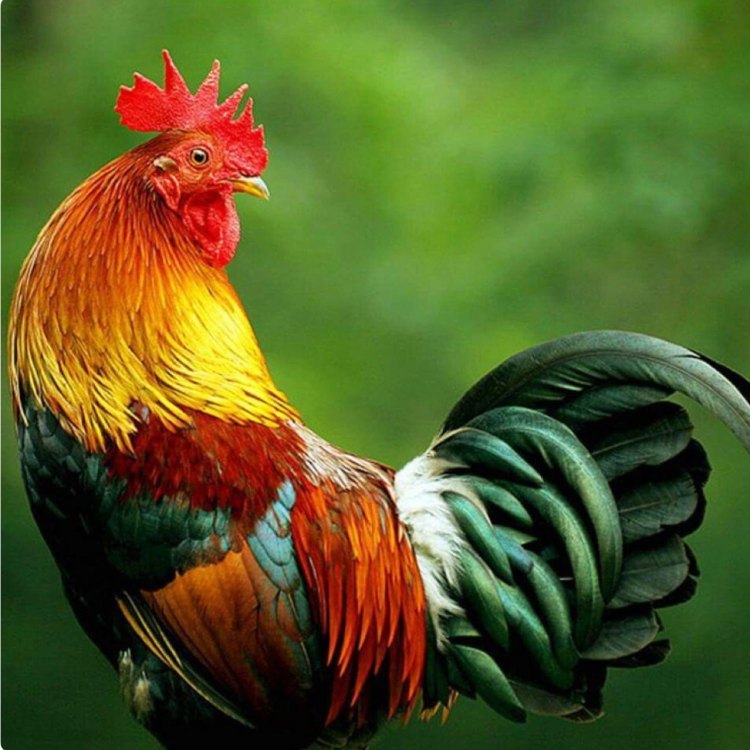
Rooster
- Adult Size: Approximately 7-9 pounds
- Average Lifespan: 5-10 years
- Reproduction: Sexual
- Reproductive Behavior: Polygynous
- Sound or Call: Cock-a-doodle-doo
- Migration Pattern: Non-migratory
- Social Groups: Flock
- Behavior: Territorial and aggressive
- Threats: Predators, diseases
- Conservation Status: Not evaluated
- Impact on Ecosystem: Seed dispersal
- Human Use: Meat and egg production
- Distinctive Features: Colorful plumage, comb and wattles on the head
- Interesting Facts: Roosters are male chickens, they have a higher-pitched crow compared to the deeper crow of the males
- Predator: Predators include foxes, dogs, cats, hawks, and snakes
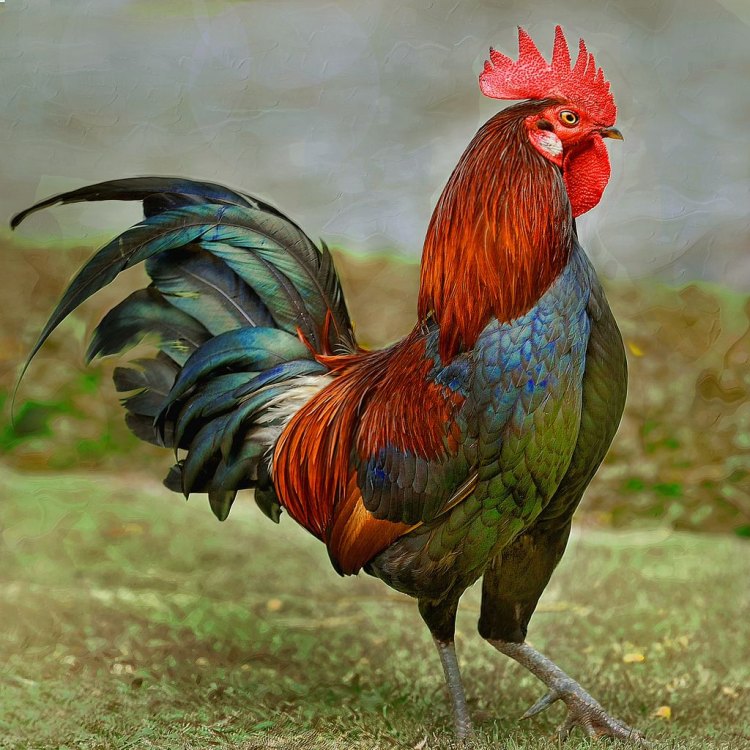
Gallus gallus domesticus
The Fascinating World of Roosters: A Closer Look at These Colorful Avian Species
When we think of farm animals, the image of roosters often comes to mind. These vibrant and vocal birds have long been a symbol of rural life, often depicted in paintings, cartoons, and literature. But beyond their iconic crowing and colorful appearance, roosters are unique creatures with interesting behaviors and roles in the ecosystem.Let's take a closer look at the world of roosters, from their physical characteristics to their behavior and impact on the environment PeaceOfAnimals.Com.
The Basics: What is a Rooster?
Roosters, also known as cockerels or cocks, are male chickens. They belong to the Phasianidae family, which includes pheasants, quails, and peacocks. Roosters differ from hens, their female counterparts, in several ways. Unlike hens, roosters have colorful plumage, a larger comb and wattles (fleshy appendages on the head), and a longer, more pointed saddle and sickle feathers.Physical Characteristics
Roosters are relatively small birds, with an average weight of 7-9 pounds when fully grown. They have sharp claws on their feet, which they use for digging, scratching, and fighting. Roosters also have a thick, muscular neck and powerful legs, enabling them to walk, run, and fly. Their wings are short and rounded, making flight difficult and limited.One distinct feature of roosters is their vivid and colorful plumage, with shades of red, green, blue, and black Rock Crab. This bright plumage serves an important purpose in attracting females as part of their mating ritual. The more colorful and flamboyant the rooster, the greater its chances of finding a mate.
Reproduction and Sexual Behavior
Roosters are polygamous, meaning they have multiple female mates. The mating ritual typically starts with the rooster performing a dance, flapping its wings, and puffing up its chest to attract a female. Once the female chooses a mate, the rooster will mate with her multiple times during the breeding season.Roosters have a unique reproductive organ called the "cloacal kiss." This is a method of internal fertilization, where the rooster transfers semen to the hen through a physical joining of their cloacae (the opening where waste and reproductive fluids are released). This process ensures fertilization and the development of eggs.
Life Span and Reproductive Behavior
A rooster's average lifespan ranges from 5-10 years, although some can live for up to 15 years with proper care. Their reproductive behavior is closely tied to their lifespan. As they age, roosters become less fertile and their sperm quality declines, making it difficult for them to mate and produce offspring.Migratory Patterns
Unlike some birds that migrate across long distances, roosters are non-migratory. This means they stay in one location throughout the year, usually in a designated territory where food and shelter are readily available.Social Behavior and Threats
In the wild, roosters live in a social group called a flock. This flock usually consists of several hens and a dominant rooster, who protects and leads the group. Roosters are inherently territorial and will defend their territory, hens, and food from outside intruders. They may also display aggressive behavior towards other roosters to establish dominance in the flock.One of the biggest threats to roosters is predation. Foxes, dogs, cats, hawks, and snakes are some of the common predators that prey on roosters. In addition, diseases and parasites can also significantly impact the health and survival of roosters.
Impact on the Ecosystem
Roosters play a crucial role in the ecosystem as seed dispersers. As they scratch and dig for food, they inadvertently disperse seeds and fertilize the soil, promoting plant growth and diversity. In addition, their droppings provide valuable nutrients for plants, further aiding in the ecosystem's balance.Human Use and Conservation Status
Roosters have been domesticated for thousands of years, primarily for meat and egg production. In some cultures, they are also used in cockfighting, a blood sport that involves two roosters fighting to the death. This practice is illegal in many countries due to animal cruelty concerns.Despite their long history with humans, the conservation status of roosters is not evaluated. However, as with most wildlife, habitat loss and human activities such as hunting and pollution can have a detrimental effect on their population.
Interesting Facts
- Roosters have a higher-pitched crow compared to hens and can even change the tone and pitch of their call to communicate different messages.- Roosters can recognize and remember over 100 individual faces, including humans.
- In some cultures, the color of a rooster's feathers holds symbolic meaning. For example, in Chinese culture, a red rooster is believed to bring good luck and prosperity.
- The record for the longest crowing rooster is held by a rooster named Nipper in Australia, who crowed for 18 seconds.
In Conclusion
Roosters may be a common sight on farms, but they are truly fascinating creatures with unique characteristics and behaviors. From their distinctive appearance to their role in the ecosystem, roosters contribute to the natural balance of the environment. As humans continue to coexist with these beautiful birds, it is essential to appreciate and preserve their existence for future generations to come.
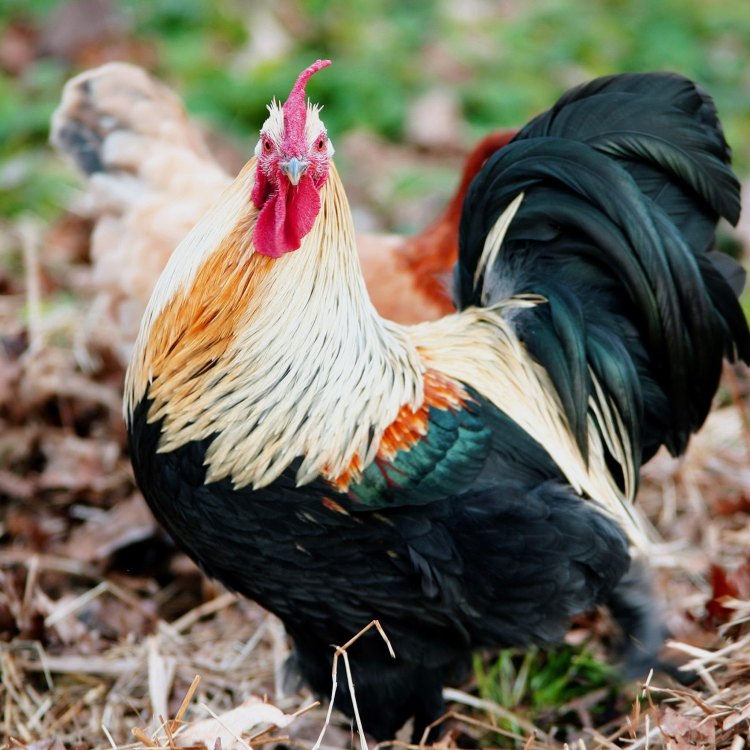
Introducing the Rooster: A Prized Farmyard Resident
Disclaimer: The content provided is for informational purposes only. We cannot guarantee the accuracy of the information on this page 100%. All information provided here may change without prior notice.

